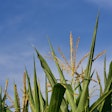
The U.S. Department of Agriculture (USDA) released its 2022 Pesticide Data Program (PDP) Annual Summary, revealing that more than 99% of the 10,665 food samples tested had pesticide residues well within the safety benchmarks set by the Environmental Protection Agency (EPA). These samples included a variety of fresh and processed fruits and vegetables, dairy products, nuts and grains.
The PDP, a national pesticide residue monitoring program established in 1991, focuses on foods commonly consumed by infants and children. Its primary goal is to ensure the safety of the U.S. food supply and bolster consumer confidence in the foods they consume. In collaboration with the EPA, the USDA annually selects different food types for testing, and partners with state agencies for sample collection and analysis.
EPA uses PDP data for dietary risk assessments and to verify that pesticide residues in foods remain at or below the established safe levels. This data is crucial for regulators, farmers, food processors, manufacturers, and consumers, providing essential insights into the actual levels of pesticide residues in commonly consumed foods.
The USDA informs the Food and Drug Administration (FDA) and the EPA of the annual pesticide residue results through monthly reports. Immediate notification is given to these agencies if any public safety concerns arise from the PDP tests.
The 2022 PDP summary, available on the USDA Agricultural Marketing Service website, details the program’s findings. The summary reports that of the total samples tested, 0.53% exceeded the established tolerance levels, with 27.6% showing no detectable residue. Notably, 19 of the samples exceeding tolerances were domestic, while 37 were imported. Additionally, 2.5% of the samples had residues for which no EPA tolerance is established, split almost evenly between domestic and imported sources.
The bulk of the tested samples, nearly 80%, were fresh and processed fruits and vegetables. Specific commodities tested included various baby foods, blueberries, carrots, celery, grapes, green beans, mushrooms, peaches, pears, plums, potatoes, summer squash, tomatoes, watermelon, corn and soybean grains, butter, and peanut butter.
For comprehensive details and access to the full PDP database, interested parties can visit the PDP section of the USDA website or contact the USDA Agricultural Marketing Service.
For further information on pesticides and food safety, the public is encouraged to visit the EPA and FDA websites.


















